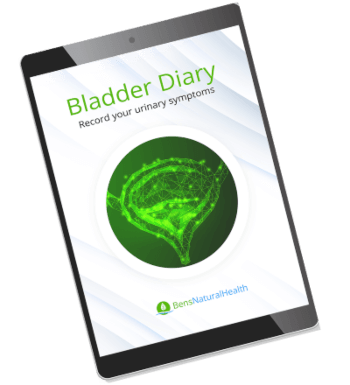As we age, the rates of UTIs significantly increase both in men and women – but more especially in women.
The prevalence of UTIs in women over 65 is approximately double the rate in the female population overall.
UTIs can severely impact the quality of life of affected elderly individuals.
In some cases, the symptoms can differ from those seen in younger people, and the complications can be more devastating.
In this article, we tell you everything you need to know about UTIs in the elderly population, including UTI symptoms, why they are more at risk, common causes, and treatment options.
Symptoms of a UTI in the elderly
The classic symptoms of UTIs are often similar for people of all age groups, including the elderly. They include:
- Pain or burning sensation when urinating
- Frequent urination
- Urgent need to pee
- Pain or tenderness in the pelvis, abdomen, or lower back
- Loss of appetite
- Fatigue or lethargy
More severe symptoms include:
- Fever
- Nausea
- Vomiting
Some elderly individuals may not show these classic symptoms. They may be unable to communicate clearly because they have conditions like dementia and Alzheimer’s disease.
In such cases, changes in behavior may be indicative of a UTI. These include:
- Confusion or increased level of confusion
- Hallucination
- Restlessness
- Agitation
- Social withdrawal
It is important to note that, even in the absence of degenerative diseases that cause cognitive impairment, elderly individuals may experience symptoms like confusion, delirium, or behavior changes along with the classic symptoms of UTIs. The reason for this is currently unknown.
However, some believe that these symptoms can occur because, in older people, the blood vessels around the brain are weaker and more likely to allow infection to enter the nervous system.
Get your FREE bladder diary
- Daily bladder diary
- Better understand your urinary symptoms
- Step-by-step guide
Why are the elderly more prone to UTIs?
The elderly are more at risk of UTIs than younger patients. In general, there is a decreased level of immune function with age.
This puts older individuals at increased risk of getting UTIs. There are also some gender-specific factors that increase UTI risk.
In older women, some of the factors that increase susceptibility to UTIs include:
- The female anatomy: The female urethra (the tube that connects the bladder outside the body) is shorter than the urethra in men. The female urethra is about 3cm in length, while the male urethra is about 20cm. This gives bacteria a shorter distance to travel and causes UTIs in women.
- Estrogen deficiency: Estrogen helps to protect the vagina and urethra from overgrowth of bacteria, and post-menopausal women experience significant drops in estrogen levels.
Some factors that can put older men at risk of UTIs include:
- Enlargement of the prostate gland (BPH) can lead to difficulty passing urine. This causes stasis of urine in the bladder, which increases the risk of bacterial growth.
- Infection of the prostate (prostatitis)
What is the most common cause of UTI in older patients?
UTIs are usually caused by bacteria or fungi. Most UTIs are caused by Escherichia coli, a type of bacteria that is often found in stool.
In elderly people using urinary catheters or living in nursing homes and other care facilities, bacteria like Enterococci and Staphylococci are more common causes.
How serious is a UTI in elderly patients?
When it is left untreated, a UTI that starts in the bladder can spread to the kidneys, leading to what is known as pylonephritis.
Pyelonephritis may be severe enough to require hospital admission and IV antibiotics. UTIs can also spread to the bloodstream, a condition known as septicemia, which can be fatal.
Immune function in the elderly is generally lower than in the young. As such, the likelihood of a UTI becoming severe and complications developing is higher.
This is why it is important to keep an eye out for UTI symptoms in older adults and seek treatment as soon as possible.

What is the best antibiotic treatment for UTI in the elderly?
There are several options available to treat UTIs in older patients. There is no single best one.
Your doctor will assess you and choose the most appropriate antibiotic treatment based on the severity of your condition, your kidney function, and the results of some tests performed.
Some oral antibiotics your doctor may prescribe include:
- Amoxicillin
- Nitrofurantoin
- Septrin
- Ciprofloxacin
If you have a severe infection or you’ve developed complications like sepsis, you may need hospitalization and IV medication.
Over-the-counter UTI pain relievers are available for healthy elderly individuals to ease the painful or burning sensation felt when urinating. Examples are:
- Phenazopyridine (Azo)
- Acetaminophen (Tylenol)
- Ibuprofen (Advil)
Preventing UTIs in elderly patients
There are practical steps that can be taken to help prevent the occurrence or reoccurrence of UTIs in the elderly. Some of them include:
- Increasing water intake, preferably to two to three liters per day.
- Avoiding alcohol and caffeine.
- Practicing proper genital hygiene. For women, cleaning should be done from front to back to avoid introducing stool into the vagina and urethra.
- Wet underwear and incontinence pads should be changed promptly.
- Topical estrogen therapy in postmenopausal women may help limit UTI recurrences.
- Use D-Mannose, a supplement that works by preventing E. coli from binding with the bladder lining, may help prevent UTIs.
- Resection of the prostate if a diagnosis of severe BPH is made may assist in preventing UTIs in elderly men.
- Adequate hygiene for catheters in elderly individuals with indwelling catheters must be provided.
FAQs
This depends on whether the person is cognitively impaired or not. In elderly individuals who can report symptoms, the most common first signs are changes in urinary habits like increased frequency or urgency and pain during urination.
For cognitively impaired elderly individuals, some signs that may point to UTI include a change in mental status (e.g., change in level of consciousness, periods of altered perception, disorganized speech, or lethargy). A change in the character of urine (e.g., bloody or cloudy urine) may also be noticed.
Yes, you can. In fact, elderly individuals are at increased risk of getting complications like sepsis because of decreased immune function.
An uncomplicated UTI usually responds quickly to treatment with an appropriate antibiotic. Treatment usually does not exceed seven days, and the infection should clear up within a few days.
Conclusion
UTIs are among the most common infections that affect humans. Because of decreased immune function and some other factors, older individuals are at increased risk of getting UTIs.
Signs and symptoms of a UTI in the elderly, especially in those with cognitive impairment, can be missed.
Primary caregivers at family homes or in nursing homes must, therefore, be aware of subtle signs like confusion and other behavioral changes.
When UTI is diagnosed early, treatment with antibiotics is effective. However, without UTI treatment, the UTI can spread to the kidneys and the bloodstream.
The spread of the infection to the kidney or bloodstream can be fatal and will require hospitalization for intravenous antibiotics treatment.
Older adults have a higher risk of experiencing these devastating complications. Taking preventive steps and keeping an eye out for UTI symptoms is necessary to ensure that they get help as soon as possible. Please seek medical attention if you suspect that you or a loved one has a UTI.
Explore More

Catheter-Associated Urinary Tract Infection (CAUTI): Signs, Prevention, Treatment.







